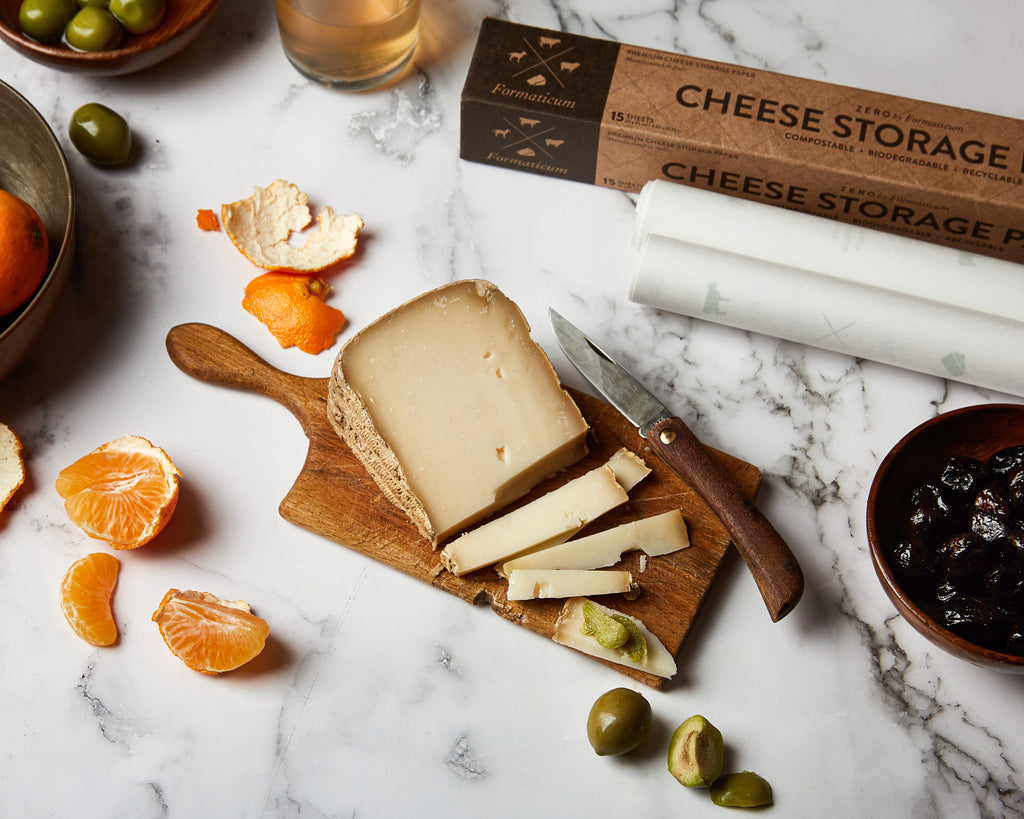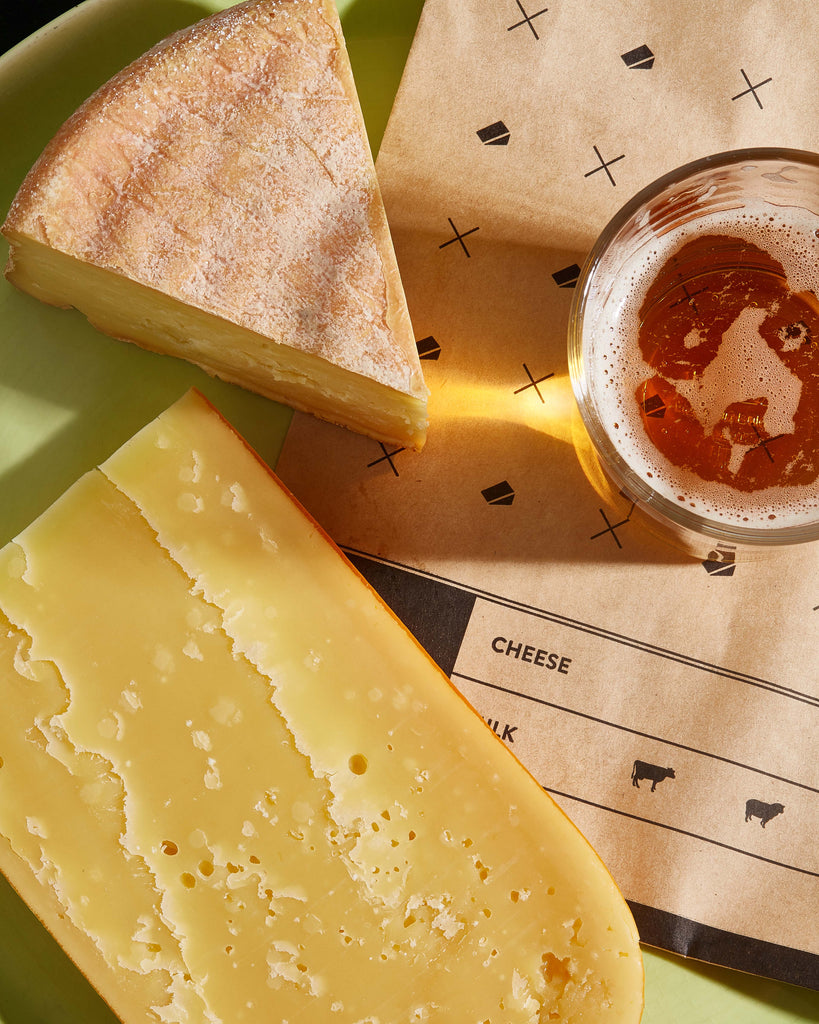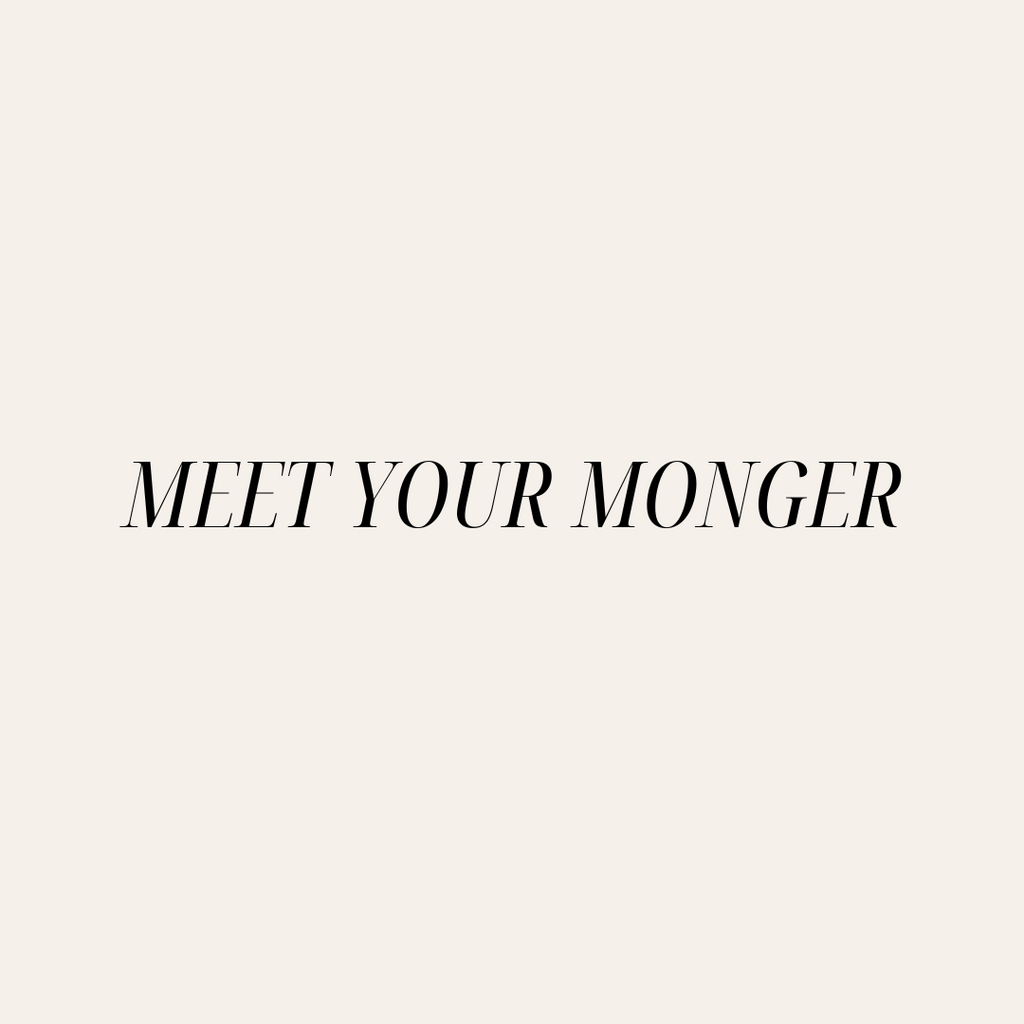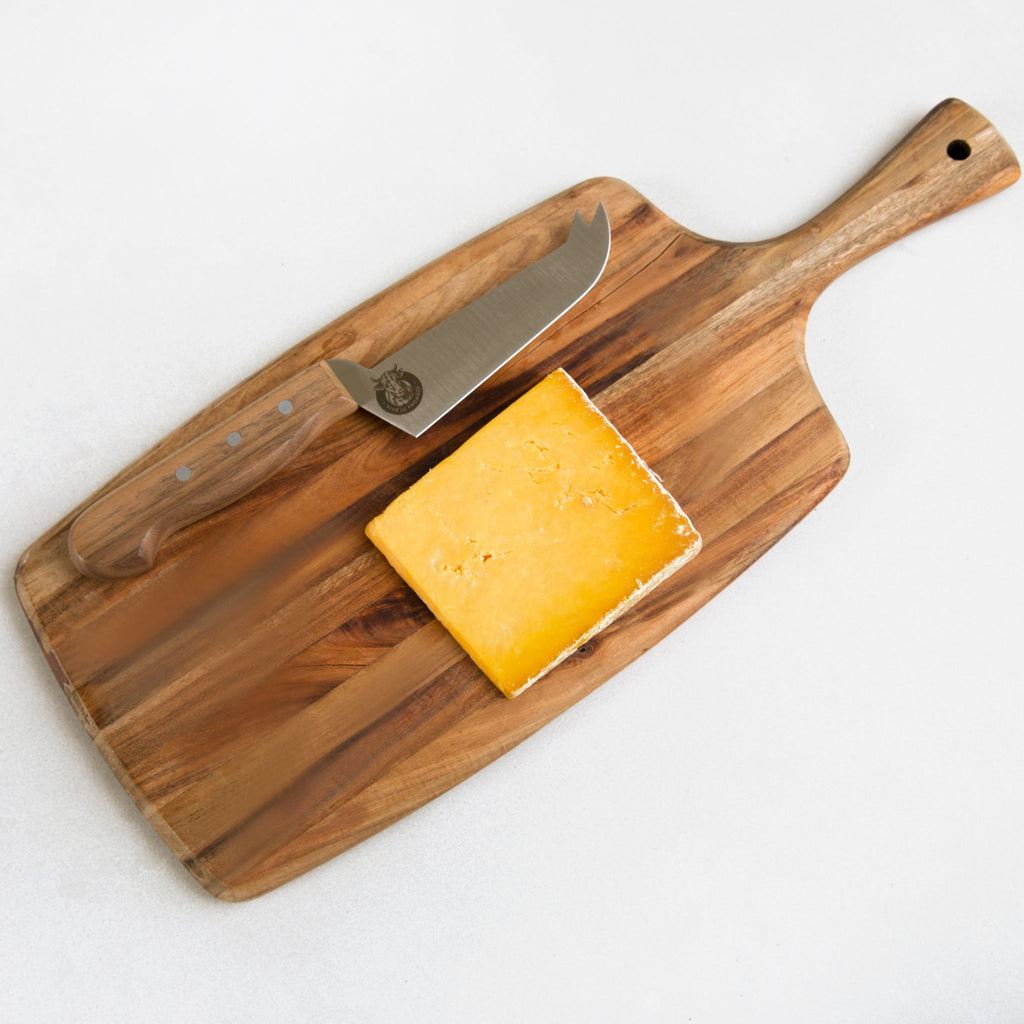Not All Pecorino Is Created Equal: A Beginner's Guide to Sheep's Milk Cheese

When you hear the word "pecorino," your first thought is most likely Pecorino Romano, Italy's salty, briny specialty sheep's milk cheese known most widely for its role in the dish cacio e pepe. But not all pecorino is created equal, and in fact the word "pecorino" does not denote one particular cheese - instead, it is simply a generic term for any cheese made from sheep's milk, as the word is derived from the Italian "pecora" meaning "sheep". Pecorino is made all over the boot, in hundreds of varieties, and included in the regional cuisine of nearly all 20 regions of Italy. From the tomato paste-rubbed Pecorino Marzolino of Tuscany to the gently smoked Pecorino Fiore Sardo of the island of Sardegna, sheep's milk cheese is an important part of Italian culinary history that reflects the gastronomic traditions of the areas where it originated.
But sheep's milk cheese is not exclusive to pecorino or even to Italy; in fact, sheep were the first animals domesticated for milk production in the Fertile Crescent, which is the Middle East today. Evidence of sheep’s milk cheese can be found throughout history, dating back to the Roman Empire. It has also been written about for centuries, most notably in Homer’s Odyssey, which mentions a ewe’s milk cheese made by the cyclops Polyphemus.
There are a few reasons why sheep's milk is particularly suited for cheesemaking - first, the solid components of sheep's milk (fat, protein, lactose) are higher than cow's milk, meaning a higher yield of cheese. Sheep's milk also contains more flavor-producing short chain fatty acids, as well as conjugated linoleic acid that has been known to support your immune system.
With all this in mind, of course it makes sense that some of your favorite iconic cheeses are made exclusively with sheep's milk! We have sheep to thank for household favorites like Manchego and Ossau Iraty, as well as cheesemonger favorites like the custardy torta-style cheeses from Spain and Portugal. The USA is also home to stellar sheep's milk cheesemakers like Landmark Creamery, Green Dirt Farm, and occasionally Blakesville Creamery, who are usually known for their award-winning goat milk cheeses from Wisconsin but occasionally foray into sheep milk territory.
But while sheep's milk cheeses are delightfully delicious, they can also be a bit more difficult to store at home to keep them in peak condition. Formaticum Cheese Storage Bags are the perfect way to prevent your precious wedges from drying out in the fridge or taking on unwanted flavors or aromas. Try our new Reusable Cheese Storage Bags for an added level of protection from the excess butterfat typical of aged sheep's milk cheese - while our classic bags should be recycled at the sight of a butterfat stain, Reusable Bags can be hand-washed, air dried, and reused again and again - they're a cheese's best friend!
And don't forget to use our greaseproof Board Liners for your next cheese platter or grazing table featuring sheep's milk cheese, especially in the summer heat!
Shop professional cheese storage solutions at formaticum.com.
National Best Friends Day: Perfect Cheese Pairing Guide

June 8th is National Best Friends Day, and in honor of the holiday, your friendly Formaticum cheese professionals have put together a list of perfect pairings, aka best friends, of cheese! While the below list contains some classic pairing suggestions, keep in mind that pairing is truly subjective, and there are no hard and fast rules - it's all about what tastes good to you! We encourage you to experiment with different flavors and textures to help you develop your palate and personal preferences, and if you feel inclined to share your favorites with us by posting on Instagram and tagging @formaticum, we might even repost them for our followers to try out. And when you're done tasting, don't forget to store your leftover cheese in Formaticum cheese storage products to preserve the flavor longer than wax paper or plastic wrap.
Triple Crème: This category includes buttery, silky cheeses like Brillat-Savarin and Delice de Bourgogne. Triple crème cheeses have a very high butterfat content, making them a perfect pairing for sparkling beverages like Prosecco or Champagne - the effervescent bubbles cut through the rich fat of the cheese, lifting the mouthfeel and creating a decadent flavor experience. This category of cheese also pairs well with sweeter fruit jams and preserves, such as Amarena cherries in syrup.
Perfect Formaticum Pairing: The Wire Cutter allows you to easily cut through these soft and delicate cheese without disturbing the paste, ensuring a neat, clean slice every time!
Washed Rind: These cheeses tend to be a bit stinky, encompassing iconic cheeses like Epoisses and Taleggio. If your funky fromage boasts meatier notes, try pairing it with something pickled such as cornichons - the acid will balance the funk, and create an experience akin to enjoying a cheeseburger.
Perfect Formaticum Pairing: Zero Cheese Storage Paper allows the cheese to breathe, which will maintain the right level of humidity to properly store a washed-rind cheese.
Cheddar - If you prefer to snack on sharp block cheddar, freshly sliced apples are a traditional and seasonal pairing that will highlight both the texture of the cheese and the crispness of the fruit. English-style clothbound cheddars tend to be more savory, making onion jam or even raw red onion an ideal complement, alongside a traditional hard cider.
Perfect Formaticum Pairing: Classic Cheese Storage Bags will create the ideal storage environment for a temperamental clothbound cheddar, keeping the complex flavor fresh until your next snack time.
Alpine: Some longer-aged alpine-style cheeses like authentic Gruyère or Gruyère-inspired Pleasant Ridge Reserve have a hint of tropical fruit flavors - highlight these flavors by enjoying them with fresh fruit like ripe mango or pineapple. Try out a Swiss tradition by dipping chunks of pear in your next fondue!
Perfect Formaticum Pairing: Our Professional Cheese Knife is sturdy and sharp, making it ideal for making perfect cuts of harder large-format cheeses.
Blue Cheese: Perhaps the most polarizing cheese style on this list, it may surprise you to know that this piquant and funky cheese is a natural pairing with sweet things like honey and even chocolate! The sweetness helps neutralize the spice of the blue and creates a more approachable flavor. Pears are also a classic pairing for French blues like Roquefort. Enjoy with dessert wine like Port or Sauternes, or even a nice local ice cider.
Perfect Formaticum Pairing: The sleek new Reusable Sheets are perfect for blue cheeses because they are easy to tightly wrap with and prevent leakage - plus, they can be hand-washed and reused again and again!
Do you have a perfect pairing that we didn't mention? Email us at hello@formaticum.com to let us know!
Meet Your Monger: Carol Johnson of Monger's Palate


The May edition of Meet Your Monger spotlights Carol Johnson, owner of Monger's Palate in Brooklyn, NY. Carol Johnson has owned and operated Monger's Palate, a cut to order cheese shop, since 2019, and the shop is known for an impressive rotation of cheeses kept in impeccable condition by Carol and her team. She has worked every job in the food industry from ship cook to hotel buffet roast slicer but has specialized in cheese for the last eleven years. She is an American Cheese Society Certified Cheese Professional, former assistant manager of Murray's Cheese, Cheesemonger Invitational Finalist, and often teaches on cheese when not running the shop. Carol also chooses Formaticum products for Monger's Palate - read our interview to find out why!
 What inspired you to become a cheesemonger?
What inspired you to become a cheesemonger? I came to NYC unexpectedly with no money and no plans but trying to get out of the kitchen lifestyle. The first job I got was as a cheesemonger and I completely fell in love.
We wrap all the cheese we sell to customers in the One-Ply Roll, as it makes a neat fold and keeps everything fresh.
Definitely the One-Ply Roll, but we also sell the retail Cheese Storage Bags and I use them at home for all those cheesemonger odds and ends.
I'd be one of those little Loire Valley chèvres like Crottin that's been aging for months, grey and unassuming but then super peppery and sharp on the palate.

Mold is good! There is an uphill battle with getting to an understanding of how it's natural to have surface molds as part of a healthy rind. The perception that "mold = spoiled" needs to be replaced with the idea that not everything has to have a sanitized appearance in order to be safe and delicious.
Cheese lasts a long time. Cheese is a preservation technique, and if it is properly wrapped and stored you can eat it for weeks!
Follow Monger's Palate on Instagram @mongerspalate and Formaticum on Instagram and TikTok @formaticum, and stop by the cheese shop if you're in NYC!
To nominate a shop or monger for the Meet Your Monger series, email emilia@formaticum.com.
In Defense of Orange Cheese

When discussing "American cheese," many so-called cheese aficionados turn their nose up at the concept, citing the assumed orange color as an indicator of low quality. But not all American cheeses are artificially colored orange, and the color itself is not inherently connected to the quality of the cheese or even exclusive to cheese made in the United States. Cheeses like French Mimolette and English Red Leicester famously boast the orange hue, and have been for years prior to the popularization of cheesemaking in America. So what exactly gives orange cheese its striking color, and how did the tradition start? May is American Cheese Month, so it seems like the perfect time to learn the true history of this long-standing cheesemaking technique.
The orange color is a natural pigment derived from annatto seed, which comes from the achiote tree that is indigenous to South America, Asia, and Africa. The pigment is generally added to milk during cheesemaking, and does not impart any flavor onto the final cheese. But not all cheeses that appear to be colored are treated with annatto - for example, a rich yellow paste may denote a cheese made with grass-fed milk rich in betacarotene, the pigment that makes carrots orange. Some deep yellow cheeses may even be colored with saffron, a tradition that is popular in southern Italy. Some orange cheeses you may be familiar with include aged Gouda, Double Gloucester, Cheshire, Cheddar, and even Colby, a Wisconsin original.
The history of coloring cheese dates back to 16th century England. Annatto was historically used to make British cheeses stand out at the market, as the vivid orange color called to mind the rich yellow color of the presumed higher quality cheeses made with the milk of pastured cows. It was also used to create consistency in cheese across the seasons - because cows can graze on fresh grass during the summer, their milk made deeper yellow-colored cheese. Cheesemakers would add annatto to their milk during winter to adjust the paler color of milk produced by cows grazing on hay during the winter, which does not contain betacarotene. Today, it is a stylistic choice, sometimes used by cheesemakers to help preserve traditional British territorial cheese recipes like Red Leicester, farmhouse Cheshire, or blue Shropshire.
Cheeses colored orange with annatto are also not the same as softer, stinkier cheeses with orange rinds like Taleggio or Epoisses - this pungent pigmentation is a result of the activity of the microbe brevibacterium linens on the rind. And to complicate things even more, some cheeses like Langres and Brebirousse are annatto-ripened, meaning annatto is used to color the rind to make it appear washed.
At Formaticum, we believe that every cheese has unique needs, and deserves to be treated with a level of respect and attention to detail that mirrors the care that the farmers, cheesemakers, and affineurs put into producing the cheese. Formaticum offers a comprehensive range of tools and storage products that ensure your cheese is served and stored properly, so that you and your guests can experience the flavor at its most authentic. So, use this handy guide the next time you want to showcase orange cheese (or any cheese!) on a board or plate.
- Soft cheeses like Langres or Brebirousse should be cut with a Professional Soft Cheese Knife, as the hollow blade will prevent the knife from sticking to the cheese, ensuring a clean cut every time. Soft-ripened or bloomy-rinded cheeses should be wrapped in our plant-based Cellophane Sheets, which are more porous than our other wrapping materials, allowing these delicate rinds to get the oxygen they need to thrive. Washed-rind cheeses like Taleggio should be wrapped in plastic-free and compostable Formaticum Zero Sheets, which are greaseproof to better contain a slicker, smellier rind.
- Harder cheeses like Mimolette, Cheddar, or Red Leicester should be cut with our sturdy Professional Cheese Knife - the long blade and specially-designed handle make it ideal for cutting those hard-to-handle denser cheeses. Wrap any leftover pieces of these cheeses in our Classic Cheese Storage Sheets or Bags to maintain the right level of humidity and keep them fresher longer than parchment paper or plastic wrap.
- Blue cheeses like Shropshire should be cut using our Professional Blue Cheese Knife, which was designed with a blade thin enough to make clean cuts through an otherwise crumbly cheese without disturbing the paste. Wrap blue cheeses in our Reusable Cheese Storage Sheets, which are sturdy enough to be leakproof, but won't give your cheese the blues by suffocating it.
Browse our entire collection of cheese storage products and tools on our website, and don't forget to give orange cheese a chance!
Do you still have questions? Email us at hello@formaticum.com!

Welcome to the formaticum Blog
Our home to share our cheese chronicles and more.
Categories
Recent Posts
Women's History Month: March 2025
Beginner's Guide to Cheese Pairings
Upcoming Events
Connect with Us
Join the Newsletter
Sign up to receive special offers, new product releases, updates from the cheese shop, and more.









